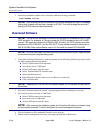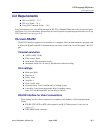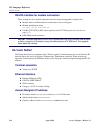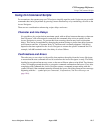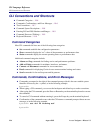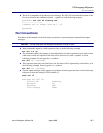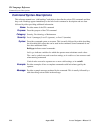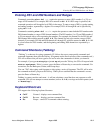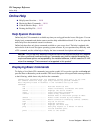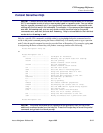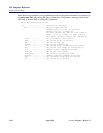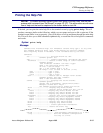
18-6 August 2003 Access Navigator - Release 1.8
CLI Language Reference
CLI Conventions and Shortcuts
CLI Conventions and Shortcuts
l Command Categories ... 18-6
l Commands, Confirmations, and Error Messages ... 18-6
l Text Conventions ... 18-7
l Command Syntax Descriptions ... 18-8
l Entering DS1 and DS0 Numbers and Ranges ... 18-9
l Command Shortcuts (Tabbing) ... 18-9
l Keyboard Shortcuts ... 18-9
Command Categories
Most CLI commands fall into one of the following three categories:
l Set commands establish the configuration parameters.
l Show commands display the “set” values of the parameters or performance data.
l Status commands display the current operating states or performance data.
Additional command categories include:
l Alarms and Log commands for finding service and performance problems.
l Add and Delete commands for attributes, interfaces, and names.
l Connect and Disconnect commands for crossconnections.
l Read commands for displaying Carrier Access remote terminal settings and status.
l Send commands for far-end loop tests and bit patterns.
Commands, Confirmations, and Error Messages
l Commands are entered to the right of the command prompt, which is the user-settable system
identifier followed by the > symbol, as in the following example.
SystemID>
l When typing a CLI command, you can use the backspace and delete keys to make corrections.
l After typing the CLI command, press the Enter or Return key on the terminal keyboard to execute
the command.
l To cancel a CLI command without entering it, press the Escape key on the terminal keyboard.
l Confirmation of the command occurs when the CLI returns a command prompt without an error
message, as in the following example.
SystemID> set ds1 24 framing esf
SystemID>



